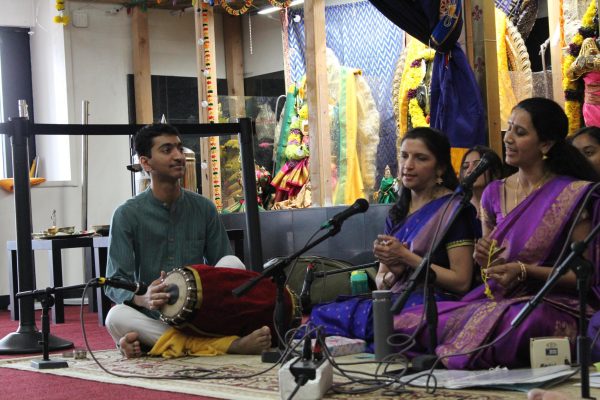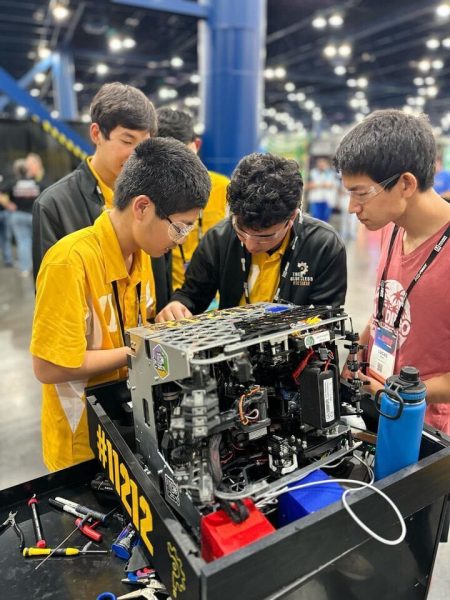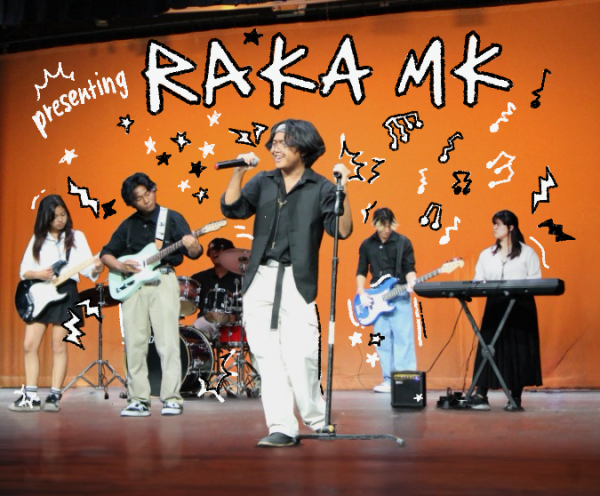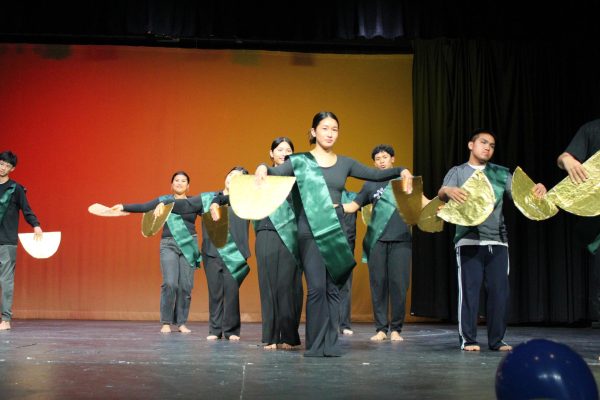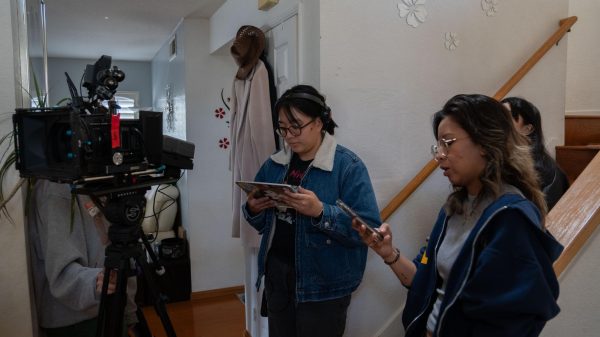After knee injury, Hopkins finds relief in didgeridoo
February 10, 2023
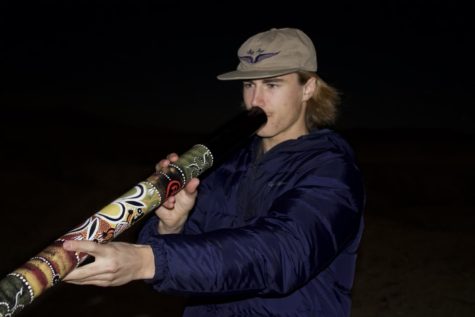
Edward Hopkins (12) felt a sharp pop in his knee. Shivers rolled down his spine in a gentle wave but even without a doctor having to tell him, he knew something was broken.
He had been cruising on his skateboard from the skatepark to his parked car. Approaching the vehicle, he had tried to do a powerslide to decrease his speed, leading to a twisted knee.
After a trip to the MRI, he found out that he caused a bucket handle tear in his medial meniscus. This required Hopkins to get a surgery at the end of last year and spend the next few months rehabilitating his leg.
“The first few weeks were the most challenging, as life is often quite harder on one leg,” Hopkins said. “Even something as simple as getting ready for school in the morning became a major hassle. I think the biggest difference, though, has been the lack of physical activity.”
No physical activity meant he couldn’t participate in his favorite pastime, surfing.
Hopkins has been surfing ever since he was 6. Wherever time permitted he’d head out to the beach to catch some waves on one of his self-made, hand-shaped boards.
“Surfing is a way for me to connect with and appreciate nature, while also allowing me to push my limits and explore new waves up and down the coast,” Hopkins said. “It’s hard to think of anything that can compare to scoring epic waves with a few friends.”
Hopkins said that those first few weeks were extremely frustrating, as he would have to sit and watch as all his friends go reap the rewards of record breaking swells while he had to sit by the wayside and watch from afar.
With the loss of his hobby, Hopkins had to fill both the surfboard shaped hole in his heart.
Enter the didgeridoo. A didgeridoo is a long, cylindrical tube that’s historically used by aboriginal tribes for teaching and storytelling, and today, used for musical purposes. Blowing through the tube produces a long, deep droning sound.
“You have to tighten the outside of your mouth while simultaneously pushing air out, allowing your lips to flap freely,” Hopkins said. “If your lips aren’t moving freely, minimal sound will be produced.”
The instrument has actually become quite popular in surfing culture. It’s common to find a stoic surfer playing on the shores of Cardiff or on the stairs at Swami’s.
Hopkins picked up the instrument during his recovery and said that the process has been a really satisfying way to spend his time.
“Playing the didgeridoo has been a great way to pass the time and take a break from work and other daily tasks,” Hopkins said. “It’s not an easy instrument to play, and attempting to master the intricately crafted wooden pipe has been an enjoyable journey.”
Hopkins said that the creative freedom in music provides him with a canvas from which he can paint any assortment of colors and styles he chooses. Regardless of how he is feeling at any given time he knows that he can replicate his emotions through his music.
“One of the biggest things I love about music is that there are no boundaries on what can be created,” Hopkins said. “It seems like there is [a] genre for every mood, and certain songs that are able to capture even the most specific emotions perfectly.”
Hopkins has also been doing physical therapy and home exercises to slowly increase his leg’s strength. He said he has lost a lot of muscle, but he is still motivated to get stronger so he can get back out on the waves.
“Recovery is relatively slow, but I’m happy to be seeing some progress,” Hopkins said. “As of now I’m six weeks post surgery and have been cleared to walk and drive which is a great feeling. I’m nowhere near 100 percent but I can’t expect to see results overnight.”



